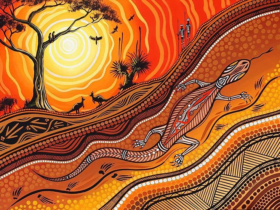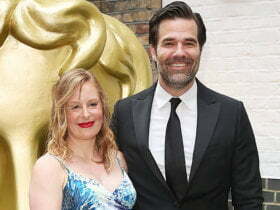Scholars have long valued Korean ceramics. And now, within the U.S. Metropolis with the most critical population of Koreans, “Beyond Line: The Art of Korean Writing” spotlights calligraphy at the Los Angeles County Museum of Art.
Anyone unsure why East Asians regard calligraphy as the best artwork shape would want to head directly to the gallery devoted to “Royal Calligraphy” and examine pages from a sketchbook of King Hyojong (who reigned from 1649 to 1659).
Using Chinese characters and the occasional flower as his topics, he experimented with scripts and patterns, producing a wonderful range of strength, emotion, and tone. In one column, characters stride, ambitious, and dynamic. In any other, they cascade like a wispy waterfall. In yet another difference, they fly off the web page, as energetic and exuberant as a Joan Miró drawing.
Koreans have been using Chinese characters for centuries—witness the writing stamped on tomb bricks made in 260, one of the earliest acknowledged pieces of Korean paper. Only the knowledgeable elite mastered hanja, as Koreans refer to Chinese writing—and, as in China, they believed the act of writing engaged no longer simply hand and eye. However, one’s crucial electricity. Hanja has. Therefore, lengthy has been surprisingly prized. We see it right here, painted on porcelain and inlaid in mother-of-pearl; filling screens, scrolls, and manuscript pages; reproduced through rubbings and woodblock prints; and nonetheless inspiring artists like Kim Jongweon and Kyungwoo Chun, each represented inside the show.

The paperwork range as calligraphers breathe new life into historic scripts or seemingly pour themselves via the comb onto the paper. In “Ink Traces,” the fluid script of Sin Saimdang (1504-1551) well-known shows a dancer’s stability of manipulating and freedom, while “The Self Becomes Buddha” embodies the Buddhist aspirations of Gim Jeonghui (1786-1856). His brush actions down the scroll, steady, unwavering, and instantly as a plumb line, regularly dropping ink till all left is the palest trace.
Hanja isn’t Korea’s simplest form of writing. In 1443, at the behest of King Sejong, students holed up within the Hall of Worthies and devised a phonetic alphabet, Hangeul, tailored to spoken Korean. They started from scratch. They primarily based a few symbols on the shapes shaped within the mouth while sounding sure syllables. They restricted the factors for lots of letters to a sprint (earth), vertical line (guy), and dot (sky).
The result turned out that any Korean may want to learn to read and write effortlessly, now not something the elite welcomed. By the 17th and 18th centuries, they have used it in private correspondence. But even though through the twentieth century, some painters were drawing on Hangeul, hanja has endured because of the dominant calligraphic artwork shape.
So modern changed into Hangeul that it might have been impossible for Stephen Little and Virginia Moon—LACMA’s curator of Chinese artwork and assistant curator of Korean art—now not to delve into its advent and impact. Nor could they have disregarded another Korean milestone: its movable kind in the 13th century. But it would have served a display on the artwork of writing better to pull such substances into an awesome phase committed to its history. Now, they confuse the narrative and create awkward groupings, including newspapers in Hangeul displayed with a master’s expressive hanja.
However, this quibble is small compared to the strength and variety of the choices and the threads that run through the display. One of those is the subject of duplicate, with a unique recognition of ink rubbings of masterly calligraphy carved into stone. Among the display’s maximum dazzling are rubbings taken from a 21-foot-tall stele erected in 414 next to King Gwanggaeto’s tomb. In all, 1,775 characters appear white towards grainy-gray ink, each filling a rectangular of the same length, their dense forms, and grid-like association exuding the authority of an occupying and now ghostly military.
Elsewhere we see smaller rubbings that Buddhist priests and student officials accrued, stone carvings made expressly for this replica, or even the occasional nod to the shape in every other medium. A personal preferred piece via Gim Jeonghui, wherein a 4-individual word—”Mount Gonryun Rides on an Elephant”—fills a four-foot-high scroll. Fellow pupil-artists would have recognized the phrases as part of a Zen riddle and the script as a relationship from China’s Han dynasty (206 B.C.-A.D. 220).
And they, in all likelihood, could have smiled, for Gim inked handiest the bad space, leaving the characters naked as they’re in rubbings. He similarly evoked the appearance of an ancient rubbing using giving the characters ragged outlines—all while taking liberties with the script, extending and curling the remaining stroke into an elephant’s trunk. Hard now not to snigger—and be thankful that South Korean establishments have made it a priority to guide such scholarly exhibitions.













